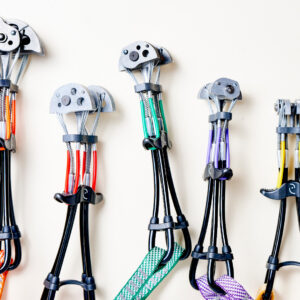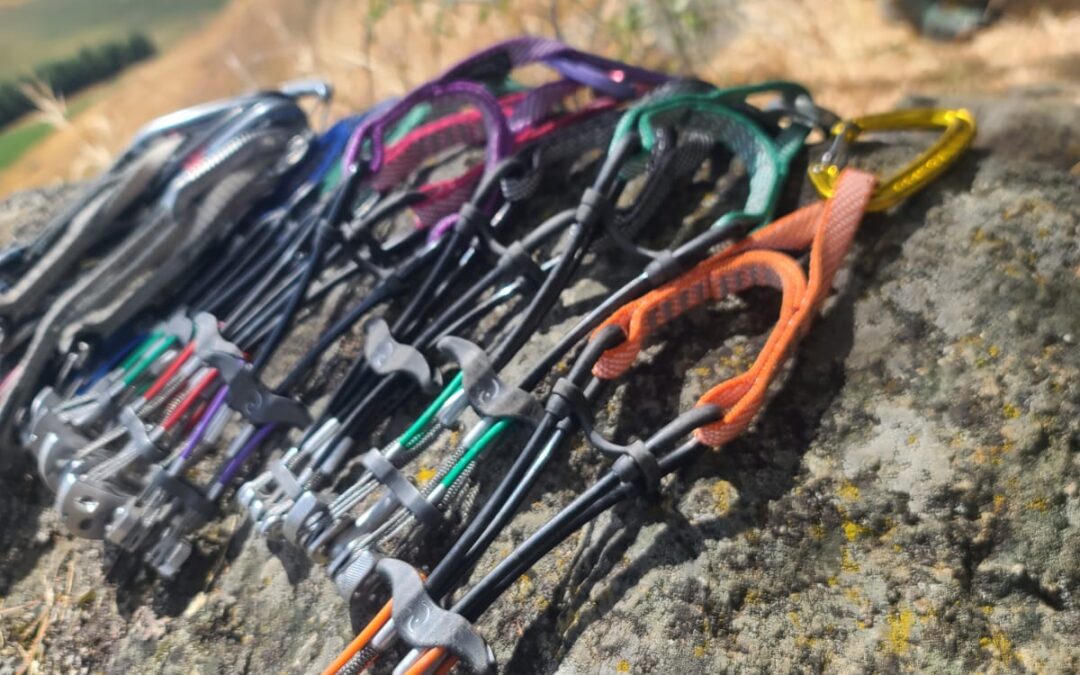Take Care of Your Gear, and It Will Take Care of You
Your climbing gear is your lifeline—literally, so climbing gear maintenance is a top priority. Whether you’re placing Totem Cams on a big wall in Yosemite or racking up for a trad route at the Gunks, keeping your gear clean, functional, and safe is crucial.
But how do you properly clean, inspect, and maintain your Totem Cams and other trad gear to ensure they last for years?
This guide will walk you through climbing gear maintenance best practices so you can keep your cams, nuts, carabiners, and slings in top condition—and most importantly, keep yourself safe on the rock.
 1. Cleaning Your Cams: The Right Way to Keep Them Functioning Smoothly
1. Cleaning Your Cams: The Right Way to Keep Them Functioning Smoothly
Cams pick up dirt, dust, and grit over time, especially if you climb in sandy or muddy environments (looking at you, Red Rock and Indian Creek climbers!).
How to Clean Your Totem Cams (or Any Cams) Properly
✅ Step 1: Shake Off Loose Dirt
- Before deep cleaning, brush off any loose dirt with an old toothbrush.
✅ Step 2: Wash with Warm Water & Mild Soap
- Fill a bowl with warm water and a few drops of dish soap.
- Submerge your cams and gently scrub with a soft brush.
- Avoid soaking cams too long—this can damage internal components.
✅ Step 3: Rinse Thoroughly & Dry
- Rinse your cams under warm running water to remove soap residue.
- Shake off excess water and leave them to dry completely.
✅ Step 4: Lubricate the Axles & Springs
- Once dry, apply a small amount of lubricant (like WD-40 Dry Lube or Metolius Cam Lube) to the axles and trigger mechanism.
- Wipe off excess lube—too much oil can attract dirt.
💡 Pro Tip: Never use grease-based lubricants (they collect grime and can make cams sticky).
 2. Inspecting Your Cams: Spotting Wear & Tear Before It’s Too Late
2. Inspecting Your Cams: Spotting Wear & Tear Before It’s Too Late
Before every climb, you should visually inspect your cams to check for damage.
What to Look For:
🔍 Lobes: Check for deep gouges, sharp edges, or excessive wear.
🔍 Axles & Springs: Ensure smooth movement—if the lobes feel sticky, it’s time to clean and lubricate them.
🔍 Stem & Trigger Wires: Look for fraying, kinks, or broken components.
🔍 Sling/Webbing: If it’s fuzzy, discolored, or stiff, it may need to be replaced.
💡 Pro Tip: If your cam sling is over 5 years old (or heavily used), send it in for reslinging or replacement.
3. When to Retire a Cam: Knowing When It’s No Longer Safe
Nothing lasts forever—not even your favorite Totem Cam. But when should you retire a cam and replace it with a new one?
Signs It’s Time to Retire a Cam:
❌ Cracked or Bent Lobes – If a lobe has a visible crack or deformation, retire it immediately.
❌ Damaged or Frayed Stem – A compromised stem can fail under load.
❌ Broken or Rusty Springs – If a cam no longer retracts properly, it’s not reliable.
❌ Worn or Cut Sling – If the webbing shows significant wear, replace it ASAP.
4. Keeping Your Carabiners, Nuts, and Slings in Top Shape
Your cams aren’t the only gear that needs maintenance. Here’s how to keep the rest of your trad rack in great condition:
Carabiners
✅ Check for sharp edges or burrs that could damage your rope.
✅ Wash with warm soapy water and dry thoroughly.
✅ Avoid oily lubricants—use dry lube only on moving parts.
Nuts & Hexes
✅ Inspect for cable frays or broken wires—retire any gear with visible damage.
✅ Wipe off dirt and chalk buildup with a damp cloth.
Slings & Runners
✅ Inspect for frayed or sun-damaged fibers—replace slings every 3-5 years.
✅ Store in a cool, dry place to prevent UV damage.
💡 Pro Tip: If you leave gear exposed to direct sunlight (on a backpack or in a car), UV rays can degrade it faster than you think.
5. Storing Your Climbing Gear: Do’s & Don’ts
Proper storage keeps your climbing protection gear in peak condition for longer.
✅ Best Practices for Storing Gear:
- Keep it dry – Store gear in a cool, dry place away from moisture.
- Avoid extreme temperatures – Heat and cold can weaken slings and trigger mechanisms.
- Separate metal and fabric gear – Carabiners and cams should be stored separately from slings and harnesses to prevent wear.
❌ What NOT to Do:
- ❌ Never store gear wet – This can cause corrosion and mildew.
- ❌ Don’t leave cams compressed for long periods – It weakens the springs.
- ❌ Avoid chemical exposure – Gasoline, oil, and solvents can degrade slings and nylon gear.
💡 Pro Tip: Store your Totem Cams racked on a gear loop or carabiner, NOT in a tight bundle where they can get crushed.
6. Reslinging & Repair Services: When to Send Gear In
Even if your cam lobes and trigger wires are in great shape, the slings wear out over time.
When to Resling a Cam:
✔️ If the sling is older than 5 years
✔️ If the sling shows significant wear, fraying, or stiffness
✔️ After a long season of high-use climbing
💡 Pro Tip: If you climb a lot in sandy or abrasive environments (like Joshua Tree or Red Rock), resling your cams sooner rather than later.
Final Thoughts: Take Care of Your Gear, and It Will Take Care of You
Keeping your climbing protection gear clean and functional is critical for your safety. By following these maintenance tips, your Totem Cams and other trad gear will stay in peak condition for years.
Quick Recap: Climbing Gear Maintenance Checklist
✅ Clean cams regularly (warm water + dry lube)
✅ Inspect gear for cracks, frays, or damage before every climb
✅ Retire cams and gear that show significant wear
✅ Store gear in a cool, dry place
✅ Resling cams every 3-5 years (or sooner if heavily used)
